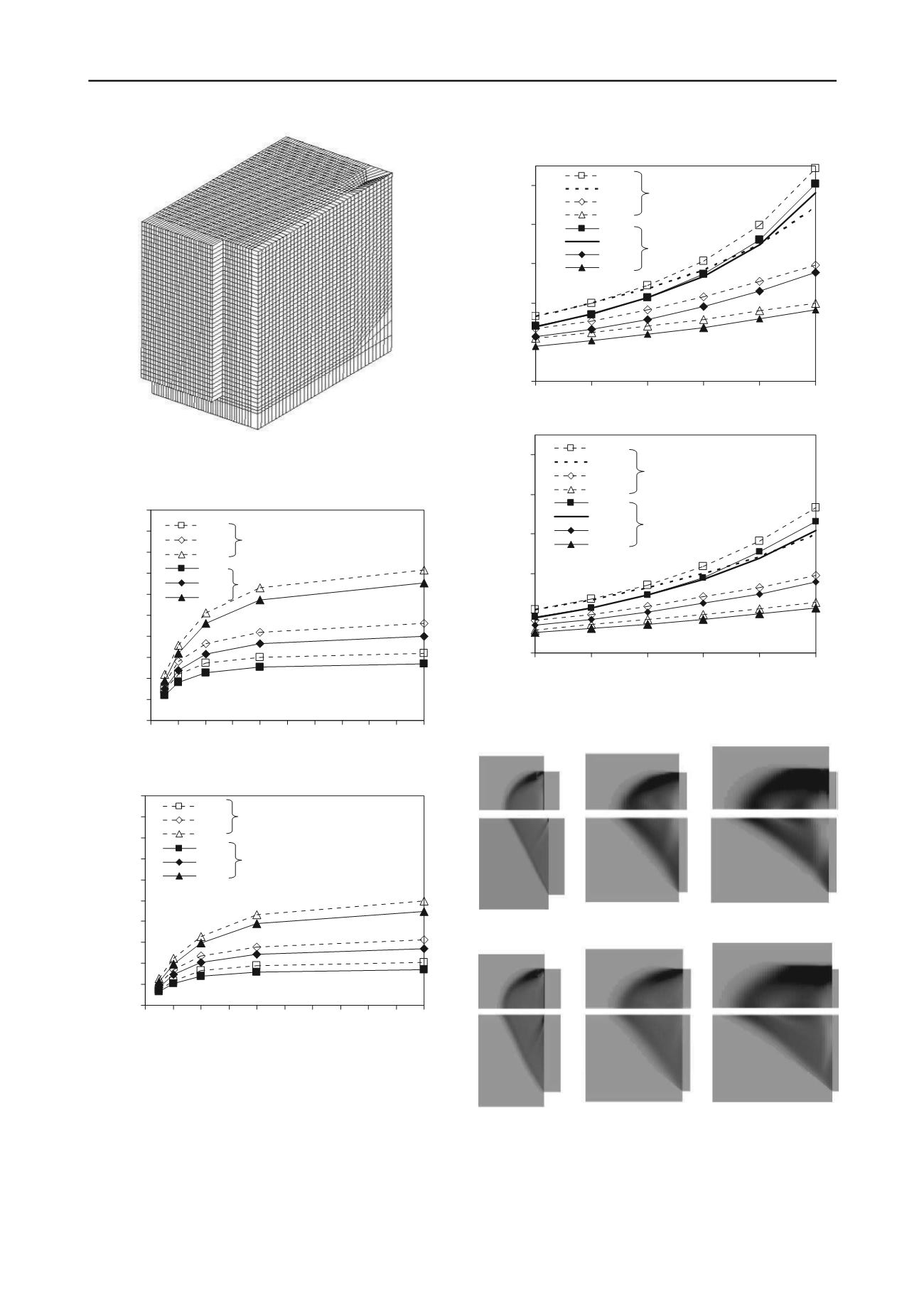
1581
Technical Committee 203 /
Comité technique 203
Figure 2. Example of the finite element mesh used in the calculations
for b/h=1 (each hexahedron represented in the figure is subdivided into
24 tetrahedral elements).
'
º
0
0.1
0.2
0.3
0.4
0.5
0.6
0.7
0.8
0.9
1
0.0 0.5 1.0 1.5 2.0 2.5 3.0 3.5 4.0 4.5 5.0
b/h
K
as
h
'=2/3
'=0
'
º
0
0.1
0.2
0.3
0.4
0.5
0.6
0.7
0.8
0.9
1
0.0 0.5 1.0 1.5 2.0 2.5 3.0 3.5 4.0 4.5 5.0
b/h
K
as
h
'=0
'=2/3
Figure 3. Values of the seismic horizontal active earth pressure
coefficient, K
as
h
, as a function of b/h.
It can be observed that the volume of soil involved in the
mechanisms is greater for the greater value of
and that it is
slightly greater for the greater friction ratio. It can also be seen
that for
’=0 and
=0 the mechanism (in the plane of
symmetry) is almost planar, whereas the mechanism for
’=2/3 is curved and more complex, although not too far from
planar.
'
º
0
0.2
0.4
0.6
0.8
1
0.0
0.1
0.2
0.3
0.4
0.5
K
as
h
2D
2D M-O
b/h=1
b/h=0.5
2D
2D M-O
b/h=1
b/h=0.5
'=0
'=2/3
'
º
0
0.2
0.4
0.6
0.8
1
0.0
0.1
0.2
0.3
0.4
0.5
K
as
h
2D
2DM-O
b/h=1
b/h=0.5
2D
2DM-O
b/h=1
b/h=0.5
'=0
'=2/3
Figure 4. Values of the seismic horizontal active earth pressure
coefficient, K
as
h
, as a function of
.
'=0;
=0
'=0;
=0.2
'=0;
=0.4
'=2/3;
=0
'=2/3;
=0.2
'=2/3;
=0.4
Figure 5. Plastic deformation zones for
’=30º,
’=0 and 2/3, and
three values of
– 0, 0.2 and 0.4.
Figure 6 presents the plan views of the plastic deformation
zones for
'=30º,
'=2/3 and different b/h ratios and
(for
graphical reasons, the case
=0 and b/h=5 is not shown). This
figure allows understanding the three-dimensional effect of the


